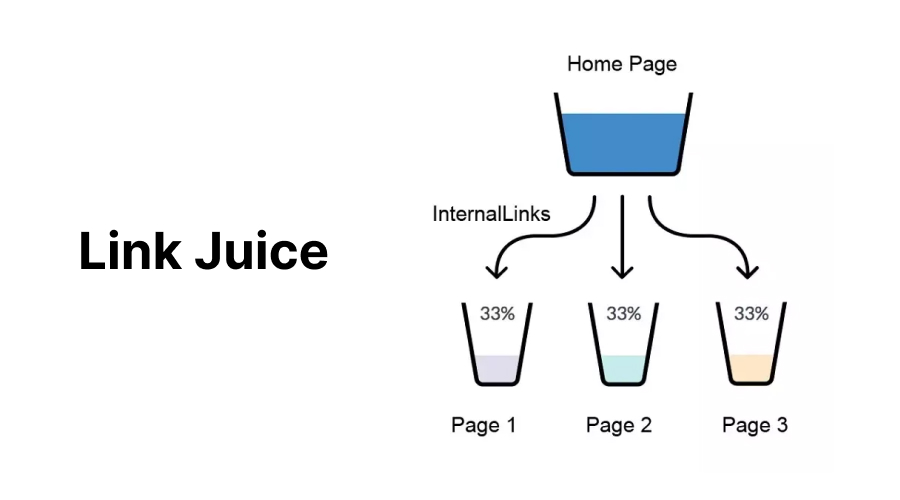

Are you still under the impression that search engine optimization (SEO) is all about building links to your website? Think again! While external links / backlinks play a crucial role in SEO, they’re not the only factor that needs attention. In fact, internal linking can be just as important, if not more so, than external link building.
Internal linking is the process of linking one page of your website to another page within the same domain. This helps search engines understand the hierarchy and relationships between your pages, which can help improve your overall SEO.
So, why is internal linking so important? Let’s take a deeper look.
The Hidden Power of Internal Linking: Why It Matters More Than You Think
Internal linking has a number of benefits when it comes to SEO and here are just a few.
Improved website navigation: Internal links make it easier for users to navigate your website and find the information they’re looking for. By linking related pages together, you can guide users through your website and keep them engaged.
Increased crawlability: When search engines crawl your website, they follow the internal links to discover new pages and content. This means that a strong internal linking structure can help search engines index your pages more efficiently and effectively.
Page authority distribution: Internal linking can help distribute page authority and link juice throughout your website. This means that pages with higher authority can pass some of that authority on to pages with lower authority, which can help improve their rankings.
Improved user experience: By guiding users through your website and providing them with relevant and useful content, you can improve their overall experience. This can lead to increased engagement, lower bounce rates and higher conversion rates.
It’s how you create some good old fashioned link juice like this 👇

Boost Your SEO with a Solid Internal Linking Strategy
Now that we’ve covered the benefits of internal linking, let’s talk about how to create a strong internal linking structure.
#1 Create a hierarchy of pages
Before you start linking pages together, it’s important to create a hierarchy of your website’s pages. This means organising your pages into categories and subcategories based on their importance and relevance. By doing this, you can create a clear and logical linking structure that search engines can easily understand.
#2 Use descriptive anchor text
When linking pages together, it’s important to use descriptive anchor text. This means using keywords and phrases that accurately describe the content of the linked page. Not only does this help users understand what they’re clicking on, but it also helps search engines understand the context and relevance of the linked pages. Don’t always use the exact keyword / phrase you’re targeting on the subsequent page. And don’t make it spammy!
#3 Link to relevant pages
When linking pages together, it’s important to link to relevant pages. This means linking pages together that are related in terms of content and topic. By doing this, you can create a logical and useful linking structure that guides users through your website.
#4 Avoid over-linking
While internal linking is important, it’s also important to avoid over-linking. This means not linking to every page on your website, as this can create a confusing and cluttered user experience. Instead, focus on linking to the most important and relevant pages. We try not to do more than 3.
#5 Update your internal links regularly
As your website evolves and changes, it’s important to update your internal links regularly. This means checking your links for accuracy and relevance, as well as updating them as needed. By doing this, you can ensure that your internal linking structure remains effective and useful for both users and search engines. You will probably need an SEO tool to help you out with this.
Examples of Internal Linking in Action
To see the power of internal linking in action, let’s take a look at a few examples.
First, let’s look at the website for Moz, a leading SEO tool provider. If we navigate to their blog, we can see that they use internal linking to guide users through their content. For example, not only do they provide links to related content, as well as links to other categories and tags at the bottom of each blog post, they also put links within the article itself to older posts or guides.
Another example is TION Global Ltd, a website we have been working on recently. You’ll see as you navigate through their website that not only do their blog posts interact with each other, but also their main service landing pages. To give TION’s audience the best experience possible, we wanted to direct their users to the best information out there, whether it was a guide, experience, or relevant products.
These examples demonstrate how internal linking can be used to improve website navigation, increase crawlability, distribute page authority, and improve user experience.
Maximising Your Website’s Potential- Don’t Make These Mistakes
In addition to these best practices and examples, there are also some common mistakes to avoid when it comes to internal linking. These include:
Linking to irrelevant pages – Linking to pages that are not relevant to the content of the page can confuse users and search engines.
Using generic anchor text – Using generic anchor text, such as “click here,” can make it difficult for search engines to understand the context and relevance of the linked pages. When it comes to some buttons / CTAs, this is ok. Just try to give you most actionable CTAs and main article anchor text more thought.
Linking too frequently to the same page – Linking too frequently to the same page can be seen as spammy by search engines and can hurt your SEO.
Not using internal links at all – Not using internal links at all can lead to a disjointed and confusing user experience, making it difficult for search engines to crawl and index your pages.
Don’t Overlook Internal Linking: The Key to Better Rankings and User Experience
So, whilst external link building is important for SEO, internal linking can be just as important. By creating a strong internal linking structure that guides users through your website and provides search engines with clear and relevant information, you can improve your overall SEO and user experience.
Remember to use descriptive anchor text, link to relevant pages, avoid over-linking, and update your internal links regularly. By following these best practices and avoiding common mistakes, you can create a powerful internal linking strategy that drives results for your website. If you want to learn more about internal linking, there are many resources available online. Check out this article from Search Engine Journal where John Mueller discusses the importance of internal links, or this guide from Moz for more best practices and examples of internal linking in action.
Back to blog







